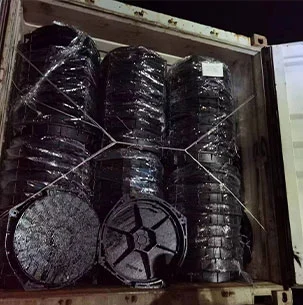
Nov . 29, 2024 19:12 Back to list
Wiring Diagram for Low Water Cutoff in Steam Boiler Systems
Understanding the Wiring Diagram for Low Water Cutoff in Steam Boilers
In the realm of boiler safety, low water cutoff devices play a crucial role. These devices are designed to prevent steam boilers from becoming dangerously low in water levels, which can lead to catastrophic failures such as boiler explosions. A key aspect of ensuring the functionality of low water cutoff systems is understanding their wiring diagrams. In this article, we will explore the components and wiring associated with a typical steam boiler low water cutoff system.
The Importance of Low Water Cutoff
The primary function of a low water cutoff device is to monitor the water level within the boiler. If the water level drops below a specified limit, the device automatically shuts off the burner, preventing the boiler from operating in a dry state. This is critical, as running a boiler without sufficient water can cause overheating, damage to the boiler, and potentially dangerous pressure buildups.
Components of a Low Water Cutoff System
A wire diagram for a low water cutoff typically includes several key components
1. Low Water Cutoff Switch This is usually a float-operated device that detects the water level. When the water level is adequate, the float remains up; if the water level drops, the float descends, triggering the cutoff mechanism.
2. Power Supply The wiring diagram will detail the power supply to the low water cutoff switch, often coming from the boiler control panel.
3. Relay or Contactors These components are essential for controlling the burner and pump operation based on inputs from the low water cutoff device.
4. Burner Control Circuit This circuit incorporates the low water cutoff switch. When the switch is activated (indicating low water), it sends a signal to the burner control circuit to shut off the burner.
steam boiler low water cutoff wiring diagram

5. Alarm Systems Some wiring diagrams include additional components for alarm systems that alert operators when the water level is low, enhancing safety measures.
Understanding the Wiring Diagram
Reading a wiring diagram requires familiarity with electrical symbols and the layout of components. A typical low water cutoff wiring diagram will have labeled connections showing how each component is interlinked.
- Power Wiring The diagram will show how the power supply is wired to the low water cutoff and the rest of the boiler control circuitry. It is crucial to follow the manufacturer’s specifications, as improper connections can lead to malfunction.
- Float Configuration The float mechanism's position is critical in the flow of electricity. In the diagram, lines will indicate the path electricity takes when the float is in the upright (normal) position versus the lowered (low water) position.
- Control Logic Understanding the logic flow in the diagram is essential. It outlines how the low water cutoff communicates with the burner control, illustrating how safety precautions are initiated if low water conditions are detected.
Safety Considerations
When working with the low water cutoff wiring, attention to detail is vital. Before conducting any electrical work, ensure that power to the boiler is disconnected to prevent electric shock. Additionally, familiarizing oneself with the National Fire Protection Association (NFPA) codes and local regulations regarding boiler safety can help avoid compliance issues.
Conclusion
The wiring diagram for a low water cutoff in steam boilers is an essential tool for maintenance and troubleshooting. By understanding the components, layout, and operational implications of the wiring, operators can ensure the safety and efficiency of their steam boiler systems. Investing time to understand these wiring diagrams not only helps in effective maintenance but also plays a significant role in preventing potentially hazardous situations in boiler operation.
-
High-Efficiency Commercial Oil Fired Steam Boiler for Industry
NewsJul.30,2025
-
High-Efficiency Biomass Fired Thermal Oil Boiler Solutions
NewsJul.30,2025
-
High Efficiency Gas Fired Thermal Oil Boiler for Industrial Heating
NewsJul.29,2025
-
High-Efficiency Gas Fired Hot Water Boiler for Sale – Reliable & Affordable
NewsJul.29,2025
-
High Efficiency Biomass Fired Hot Water Boiler for Industrial and Commercial Use
NewsJul.29,2025
-
High-Efficiency Biomass Fired Hot Water Boiler for Industrial Use
NewsJul.28,2025
Related PRODUCTS






















